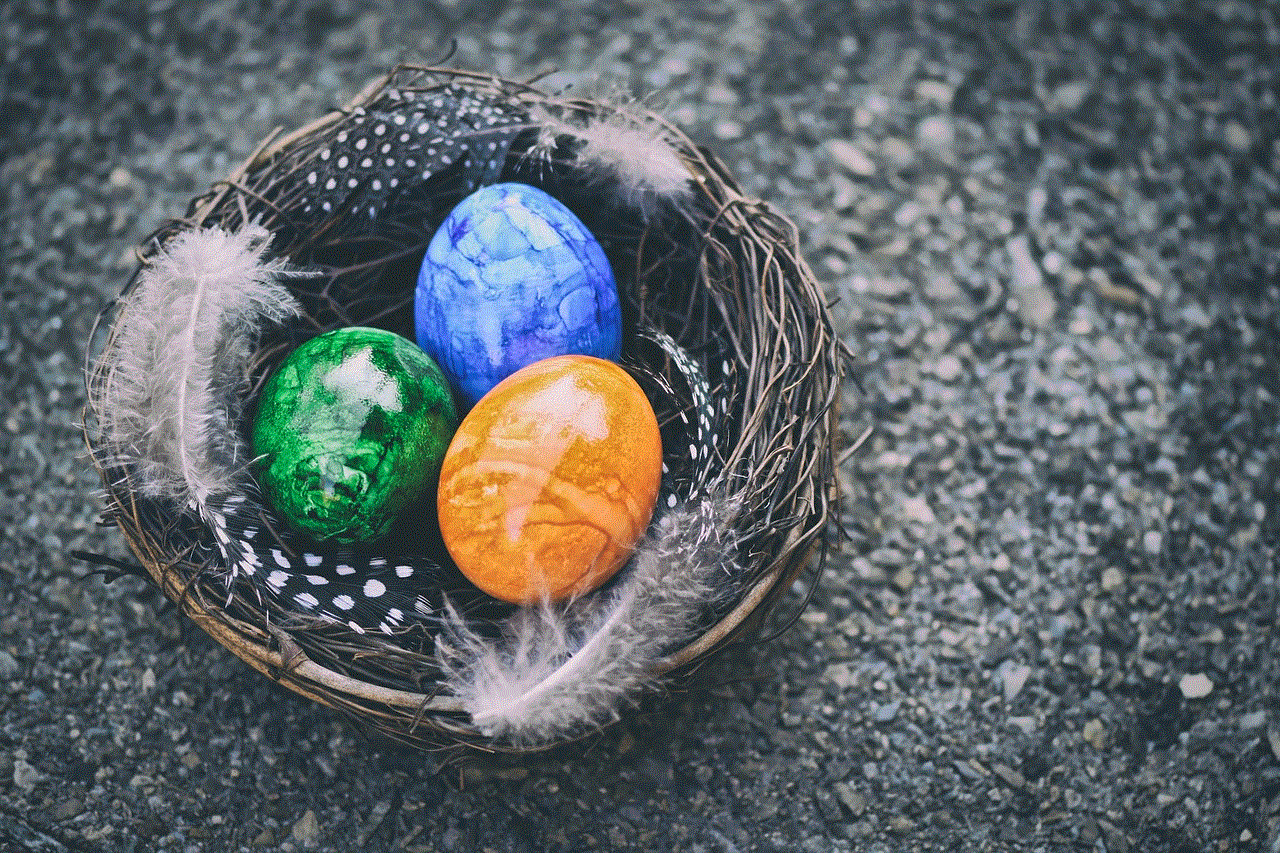when people take anime to far
Title: When People Take Anime Too Far: The Dark Side of Anime Obsession
Introduction:
Anime, a form of Japanese animation, has gained immense popularity worldwide over the years. It has captivated audiences with its unique storytelling, vibrant visuals, and diverse range of genres. While many enjoy anime as a form of entertainment, there is a subset of fans who take their love for anime to extreme levels. In this article, we will explore the darker side of anime obsession, delving into the potential consequences and examining the reasons behind such extreme behavior.
1. The Escapist Fantasy:
One reason people become obsessed with anime is its ability to offer an escape from reality. For some individuals, the allure of anime lies in its ability to transport them to fantastical worlds, where they can experience thrilling adventures and connect with fictional characters on a deep emotional level. However, when this escapism becomes excessive, it can lead to a detachment from reality and hinder personal growth.
2. Unrealistic Expectations:
Another aspect of anime obsession is the development of unrealistic expectations. Anime often portrays idealized versions of characters, relationships, and societies. Consequently, some fans may start comparing their own lives to the fictional worlds they adore, leading to dissatisfaction and disappointment in reality. The inability to meet these fantastical standards can result in feelings of loneliness, anxiety, and depression.
3. Social Isolation:
Anime obsession can also contribute to social isolation. Some fans may become so engrossed in the anime world that they neglect real-life relationships and social interactions. Spending excessive amounts of time watching anime, participating in online forums, or attending conventions can hinder the development of meaningful connections with others, leading to feelings of loneliness and isolation.
4. Unhealthy Obsession with Anime Characters:
A concerning aspect of anime obsession is the development of unhealthy infatuations with anime characters. Known as waifu or husbando culture, some fans become emotionally attached to fictional characters to an extreme degree. This obsession can hinder the formation of real relationships and lead to an unhealthy fixation on an unattainable ideal.
5. Financial Consequences:
Anime merchandise, such as figurines, posters, and DVDs, can be expensive. Extreme anime fans may spend significant amounts of money on collecting memorabilia, attending conventions, and purchasing limited-edition items. This financial strain can lead to debt and financial instability, further exacerbating the negative consequences of anime obsession.
6. Detrimental Effects on Mental Health:
While anime can be a source of comfort and inspiration, excessive consumption can have detrimental effects on mental health. Binge-watching anime for extended periods can disrupt sleep patterns, contribute to sedentary lifestyles, and increase the risk of developing anxiety and depression. Moreover, the intense emotional investment in fictional characters can lead to emotional instability and difficulty distinguishing between reality and fantasy.
7. Stigmatization of Anime Fans:
Due to the extreme behavior exhibited by some fans, anime enthusiasts often face stigmatization and negative stereotypes. The general public may perceive anime fans as socially awkward, detached from reality, or even obsessive. This stigma can further contribute to isolation and difficulties in forming genuine connections with others.
8. Escalation to Harmful Behavior:
In rare cases, extreme anime obsession can escalate to harmful behavior. This includes stalking, harassment, and even acts of violence. While it is crucial to note that the majority of anime fans do not engage in such behavior, the small percentage who do can contribute to the negative perception of anime enthusiasts as a whole.
9. Addressing Anime Obsession:
Recognizing and addressing anime obsession is essential for the well-being of individuals and the anime community at large. Encouraging a healthy balance between anime consumption and real-life activities is crucial. Promoting social interactions, engaging in physical exercise, and pursuing diverse interests beyond anime are effective ways to combat the negative consequences of obsession.
10. Fostering a Healthy Anime Community:
To mitigate the dark side of anime obsession, it is essential to foster a healthy and inclusive anime community. This can be achieved through education and awareness campaigns that promote responsible consumption, mental health support, and the importance of maintaining a healthy balance between anime and reality. Encouraging open dialogue and creating safe spaces for fans to connect and share their experiences can also help combat the negative consequences of anime obsession.
Conclusion:
While anime can be a source of joy and inspiration, it is crucial to recognize the potential dangers associated with extreme obsession. From social isolation and unrealistic expectations to financial strain and detrimental effects on mental health, the dark side of anime obsession poses significant risks. By promoting responsible consumption, fostering a healthy anime community, and encouraging a balance between anime and real-life activities, we can ensure that the love for anime remains a positive and enriching experience for all fans.
disney technology solutions & services
Disney Technology Solutions & Services: Transforming the Magic
Disney – a name synonymous with magic, innovation, and unparalleled entertainment experiences. From its humble beginnings as an animation studio in 1923, to its current status as a global entertainment powerhouse, Disney has always been at the forefront of technology and innovation. And in today’s rapidly evolving digital landscape, Disney continues to push boundaries and redefine what’s possible with their technology solutions and services.
In this article, we will explore the world of Disney Technology Solutions & Services, and how they are transforming the magic of the Disney brand.
The Beginnings of Disney Technology Solutions & Services
Disney’s first foray into technology can be traced back to the 1950s, when they introduced the world to the groundbreaking technology of audio-animatronics. This technology, which brought lifelike movement and emotions to inanimate objects, was first showcased in Disneyland’s Enchanted Tiki Room and has since been used in several other attractions, including the iconic Pirates of the Caribbean ride.
But it wasn’t until the 1980s that Disney started to truly embrace technology as a means to enhance their guest experience. With the launch of EPCOT Center in 1982, Disney introduced several groundbreaking technologies, such as the Omnimover ride system and interactive touchscreens, which allowed guests to engage with attractions in a whole new way.



As the world moved into the digital age, Disney continued to invest in technology, with the launch of their first website in 1995 and the introduction of the FastPass system in 1999. But it wasn’t until the early 2000s that Disney Technology Solutions & Services truly started to take shape.
The Birth of Disney Technology Solutions & Services
In 2000, Disney established the Disney Interactive Media Group (DIMG), with the aim of creating digital products and experiences that would engage and entertain guests in new and innovative ways. This marked the beginning of Disney’s dedicated focus on technology solutions and services.
One of the first major projects undertaken by DIMG was the launch of Disney’s online gaming platform, Disney Interactive. This platform allowed guests to play games based on their favorite Disney characters and stories, and also served as a hub for Disney’s digital content.
But it wasn’t just about gaming – Disney also started to leverage technology to enhance their theme parks. In 2003, they introduced the MagicBand – a wearable device that serves as a ticket, room key, and payment method for guests at Walt Disney World. This technology revolutionized the guest experience, making it easier and more convenient to navigate the parks.
The Expansion of Disney Technology Solutions & Services
With the success of the MagicBand, Disney continued to expand its technology solutions and services. In 2006, they launched Disney Mobile, a mobile phone service that allowed guests to stay connected while in the parks. And in 2012, they introduced the My Disney Experience app, which serves as a digital guide and planning tool for guests, providing real-time wait times for attractions, interactive maps, and the ability to make dining reservations and FastPass selections.
But perhaps the most significant expansion of Disney Technology Solutions & Services came in 2009, with the acquisition of Marvel Entertainment. With this acquisition, Disney gained access to a vast library of beloved characters and stories, as well as a wealth of technological expertise. This allowed Disney to create new and innovative experiences, such as the Iron Man Experience at Hong Kong Disneyland, which utilizes augmented reality technology to immerse guests in the world of Iron Man.
In 2012, Disney made another major acquisition – this time of Lucasfilm, the studio behind the iconic Star Wars franchise. This not only added to Disney’s already impressive portfolio of intellectual properties, but also gave them access to the groundbreaking visual effects company Industrial Light & Magic. With this acquisition, Disney was able to bring the world of Star Wars to life in their theme parks, with attractions such as Star Wars: Galaxy’s Edge, which utilizes cutting-edge technology to create an immersive experience for guests.
The Impact of Disney Technology Solutions & Services
The impact of Disney Technology Solutions & Services can be seen in every aspect of the Disney brand. From the theme parks to the movies, from the merchandise to the digital experiences, technology is at the heart of everything Disney does.
One of the most notable impacts of Disney’s technology solutions and services is the enhanced guest experience. With the introduction of MagicBands, My Disney Experience, and other digital tools, guests are now able to plan and customize their Disney vacations like never before. This has not only made the guest experience more convenient, but also more personalized, allowing guests to create their own unique Disney magic.
Technology has also allowed Disney to reach a wider audience and engage with them in new and exciting ways. With the launch of their streaming service, Disney+, in 2019, Disney has been able to bring their beloved characters and stories into the homes of millions of people around the world. This has not only expanded their reach, but also allowed them to collect valuable data and insights on their audience, which can be used to create even more personalized experiences in the future.
But perhaps the most significant impact of Disney Technology Solutions & Services is the way it has pushed the boundaries of what’s possible in the world of entertainment. Disney has always been known for its innovation, and with their technology solutions and services, they have raised the bar even higher. From the groundbreaking use of motion capture technology in Avatar Flight of Passage at Disney’s Animal Kingdom, to the creation of the world’s first fully animatronic character, the Seven Dwarfs Mine Train at Magic Kingdom, Disney continues to push the limits and amaze guests with their technological advancements.
The Future of Disney Technology Solutions & Services
As technology continues to evolve and shape the world around us, there’s no doubt that Disney will continue to lead the way with their technology solutions and services. With the recent launch of Star Wars: Rise of the Resistance, which utilizes state-of-the-art ride technology, and the upcoming TRON Lightcycle Run coaster, which will feature a first-of-its-kind ride system, Disney is showing no signs of slowing down when it comes to innovation.



But it’s not just about the theme parks – Disney is also investing in technology to enhance their movie productions. With the use of virtual reality technology, Disney is able to bring their stories to life in ways that were previously unimaginable. This was showcased in the making of The Lion King (2019), where virtual reality was used to create the breathtaking African landscapes seen in the film.
And with the recent launch of Disney+, which has already amassed over 100 million subscribers, it’s clear that Disney will continue to expand their digital footprint and utilize technology to engage with their audience in new and innovative ways.
In Conclusion
Disney Technology Solutions & Services has come a long way since the days of audio-animatronics. From the launch of the first website to the creation of groundbreaking theme park attractions, Disney has always been at the forefront of technology. And as we look to the future, it’s clear that technology will play an even bigger role in shaping the magic of the Disney brand. With their dedication to innovation and their commitment to creating unforgettable experiences, there’s no doubt that Disney will continue to transform the magic for generations to come.
disable dhcp on router
Disabling DHCP on a router can be an intimidating task for many people, especially those who are not tech-savvy. However, it is a necessary step for those who want to manage their network settings manually or have a specific requirement for their network setup. In this article, we will guide you through the process of disabling DHCP on your router and explain the reasons why you may want to do so. So, let’s dive in and explore the world of DHCP and routers.
First, let’s understand what DHCP is and how it works. DHCP stands for Dynamic Host Configuration Protocol. It is a network management protocol that is used to assign IP addresses and other network configuration settings to devices connected to a network. In simple terms, it is responsible for automatically assigning IP addresses to devices on a network, making it easier to connect and communicate with other devices. DHCP plays a crucial role in the functioning of a network, and disabling it can have significant implications.
Now, let’s discuss the reasons why you may want to disable DHCP on your router. The primary reason is to have more control over your network settings. By disabling DHCP, you can manually assign IP addresses to devices on your network, which can be beneficial in specific situations. For example, if you want to set up a secure network for your office, you may want to assign static IP addresses to your devices to restrict access to only authorized devices. Additionally, disabling DHCP can also help you avoid conflicts with other devices on your network that may have the same IP address.
Another reason to disable DHCP on your router is to reduce network traffic. When DHCP is enabled, devices on your network constantly communicate with the router to renew their IP addresses. This can cause unnecessary network congestion and slow down your internet speed. By disabling DHCP, you can reduce the amount of network traffic and improve the overall performance of your network.
Furthermore, disabling DHCP can also enhance the security of your network. When DHCP is enabled, any device can connect to your network and obtain an IP address. This can make your network vulnerable to attacks from unauthorized devices. By manually assigning IP addresses, you can control which devices can connect to your network and ensure that only trusted devices have access.
Now that we have discussed the reasons why you may want to disable DHCP let’s move on to the steps to disable it on your router. The process may vary slightly depending on the type of router you have, but the general steps remain the same. Here’s how you can disable DHCP on your router:
Step 1: Access your router’s web-based interface. To do this, you will need to know the IP address of your router. You can find this information in the router’s user manual or by doing a quick internet search with your router’s model number. Once you have the IP address, enter it into your web browser’s address bar, and press Enter.
Step 2: Log in to your router’s interface. You will be prompted to enter a username and password. If you have not changed these from the default settings, you can find them in the router’s manual. It is recommended to change the default login information for security purposes.
Step 3: Once you have logged in, look for the DHCP settings in the router’s menu. It is usually located under the LAN or WAN settings, depending on your router’s manufacturer. Click on the DHCP settings to open them.
Step 4: In the DHCP settings, you will see an option to enable or disable DHCP. Uncheck the box next to “Enable DHCP” to disable it.
Step 5: Save the changes. Click on the “Save” or “Apply” button to save the changes you have made. Your router will restart, and DHCP will be disabled.



Congratulations, you have successfully disabled DHCP on your router. However, keep in mind that this will not affect devices that are already connected to your network. They will continue to use the IP addresses assigned by DHCP until they are disconnected and reconnected to the network.
In conclusion, disabling DHCP on your router can give you more control over your network, reduce network traffic, and enhance the security of your network. However, it is not a decision to be taken lightly. If you are not confident in your technical skills, it is always best to seek professional help to avoid any network issues. We hope this article has provided you with a better understanding of DHCP and how to disable it on your router. Thank you for reading, and happy networking!